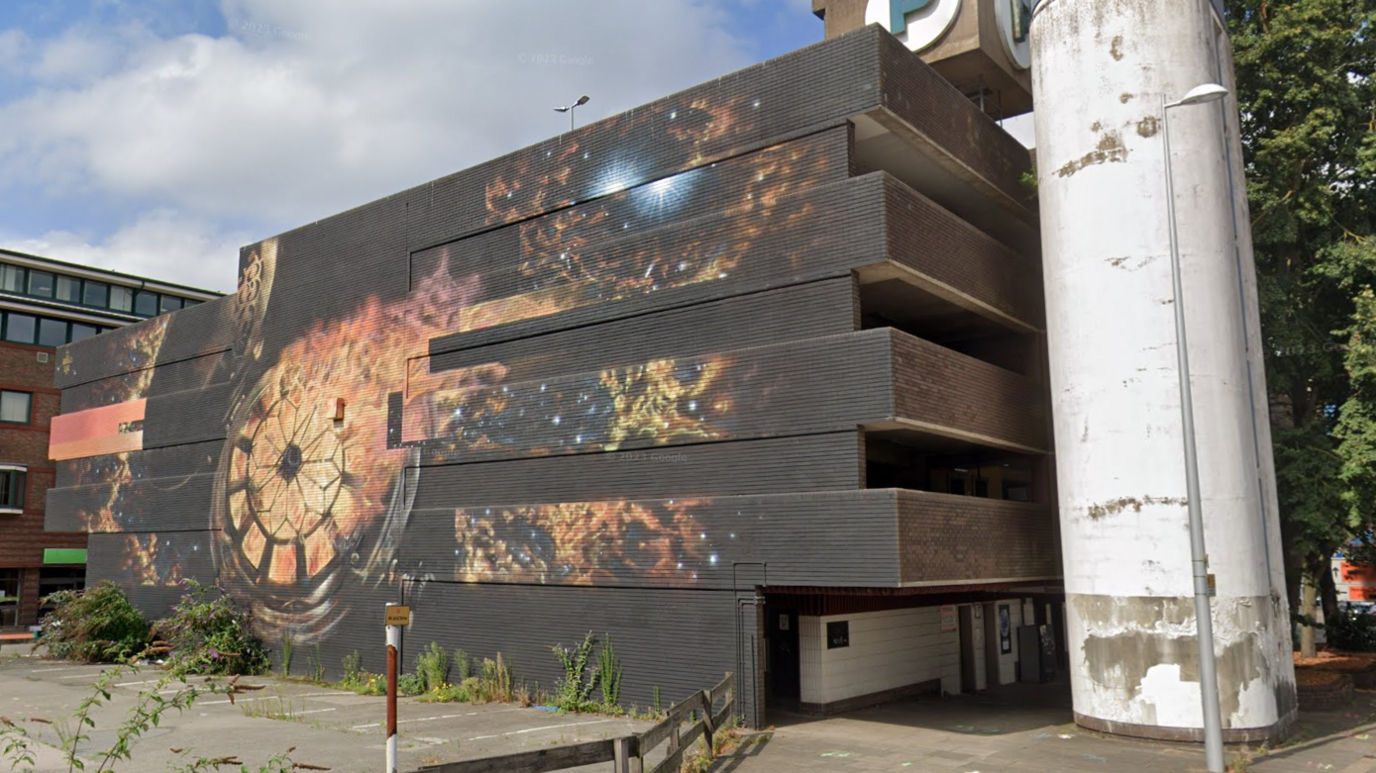Car park demolition threat to sculptor's artworks
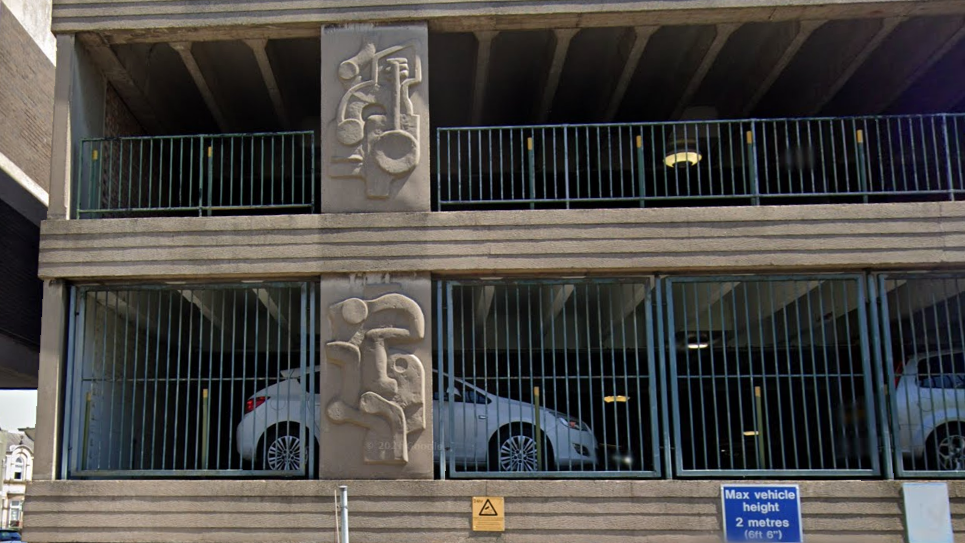
Modernist reliefs by renowned artist and sculptor Harold Gosney feature on the pillars of Abbey Walk car park in Grimsby
- Published
A council has been urged to save "very important" artwork on the walls of a multi-storey car park that looks set to be demolished.
Abbey Walk car park in Grimsby, which was built in 1969, has been closed since May because of structural issues caused by water penetrating some of its beams.
North East Lincolnshire Council will decide this week whether to proceed with plans to demolish it and replace it with a ground-level car park.
The car park's pillars feature modernist reliefs by renowned artist and sculptor Harold Gosney – works that local campaigners say should be "saved”.
Mr Gosney said he was invited to carry out the car park commission by Gordon Smith, director of the then Nicholson and Rushton Architects in Bargate, Grimsby.
"The four designs I produced were inspired by drawings in the handbook of the car that I had at the time, which was an Austin Cambridge estate car, and included suspension, carburetor, etc," he said.
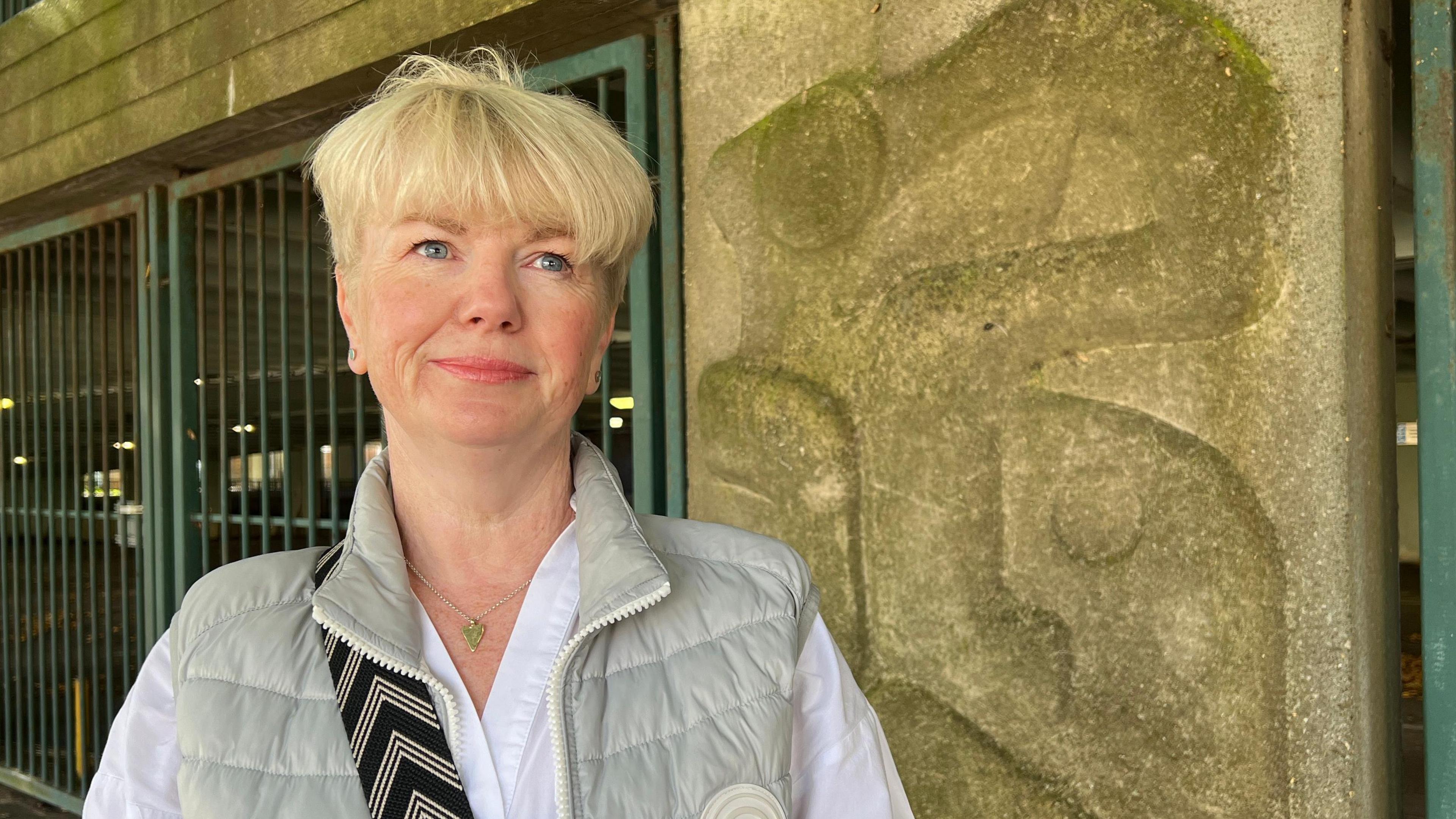
Kerry Henderson, of Grimsby, Cleethorpes and District Civic Society, hopes the artwork can be saved
Kerry Henderson, a member of Grimsby, Cleethorpes and District Civic Society’s executive, described Abbey Walk, with its relief artwork, as “quite an iconic-looking car park”.
In a freedom of information request seen by the Local Democracy Reporting Service, she asked: “Is there a business case for knocking it down, can the artwork be saved, and why are we reducing the car park spaces in the town when the town’s on the up?”
Ms Henderson told the BBC the artwork was "very important".
"Art is subjective," she said. "People have different views on it, but it is of its time and sometimes I think we look back on buildings that we have lost and think 'oh, I wish we still had that'.
"This is from the Sixties and I think it's going to be something in the future, if we just get rid of it, that we might hope we'd saved."
A council report acknowledged the artworks “are considered of historic interest by some local groups”.
The report said that while options would be considered, the reliefs may be too expensive or not safe to successfully remove.
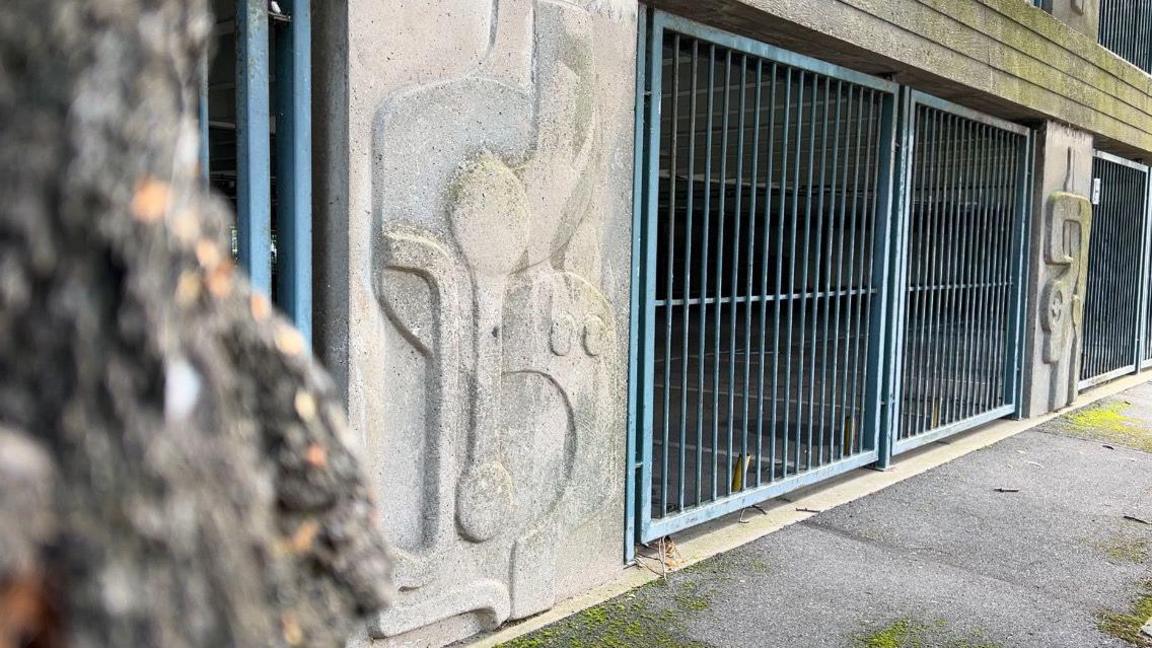
The Abbey Walk car park boasts almost 100 of the reliefs on its exterior walls
Councillors were presented with four options for the future of the 429-space car park, including replacing it like-for-like and building a two-storey structure in its place.
However, the option recommended for approval is to demolish it by spring 2025 and replace it with a ground-level car park.
That option has the lowest cost, estimated to be between £1.5m and £2.5m, and would retain 80 to 120 parking spaces. The work would take 12 to 18 months to complete.
The council’s cabinet is due to meet on Wednesday to decide on the proposals.
However, Ms Henderson urged the authority to consider plans to save the artwork first.
"Of course, safety is a primary concern," she said. "But I haven't seen any plans to suggest the artwork will be saved.
"I would hope they will be able to delay any decision on demolishing the car park until they have come up with a plan to see if the artwork can be saved and what could happen to it afterwards."
Preservation hope
Mr Gosney added: "If the decision to demolish the car park on safety grounds is made, but at the same time if Grimsby residents feel it important for the artwork to remain as part of its community, my suggestion would then be that one of each of the four concrete panels could be preserved."
In a statement, Councillor Stewart Swinburn, cabinet member for highways, said: “We are meeting the artist later this month to try to understand how they were created, and whether they can actually be removed from the structure, safely, and in one piece.
"Once we understand this, if there is a way forward, we can explore options about what to do with the artwork and whether, and how, any of it can be preserved for the future.”
Listen to highlights from Lincolnshire on BBC Sounds, watch the latest episode of Look North or tell us about a story you think we should be covering here, external.
Related topics
- Published20 August 2024
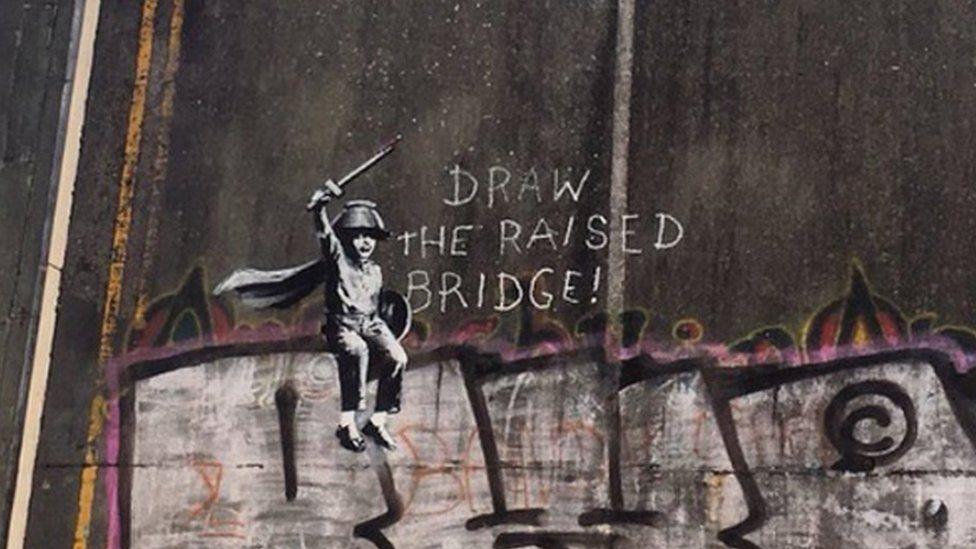
- Published26 February 2024
